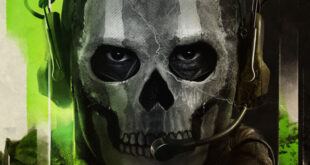Over the decades, the global video games industry has seen some fierce rivalries. Sonic vs Mario. FIFA vs PES. Xbox vs PlayStation.
But the fiercest and bitterest of all conflicts has to be the one between EA and Activision.
The two super-powers of game publishing have been locked in battle for over 30 years. And the animosity between the two was laid bare in 2010 after a dispute between Activision and Call of Duty creators Infinity Ward saw many of the developer’s staff walk out, form their own studio, and then jump into bed with EA. Respawn – as the studio is aptly called – launches its first game Titanfall in March.
But as anyone familiar with industry history will tell you, this was not an isolated incident. The EA/Activision war goes back ten years. And it was actually Activision that fired the first shot.
Back in 2003, EA had Medal of Honor as the runaway World War II shooter. It was fabulous. That was the product to beat,” says Scott Dodkins, who was Activision’s Euro VP at the launch of the first Call of Duty.
I think the EA/Activision rivalry was even more intense then. We were really gunning for EA. We were desperate to narrow the gap and overtake it, which Activision eventually did. EA had games like FIFA, which we couldn’t compete with. But Medal of Honor was a genre we thought we could enter. So we were looking for a product that could emulate and beat it, and we came up with Call of Duty.”
"I think the EA/Activision rivarly was even more intense in 2003.
We were really gunning for EA."
– Scott Dodkins, ex-Activision VP
By 2002, Medal of Honor had established itself as a major force on consoles, with two PSOne games and the PS2, GameCube and Xbox smash hit, Medal of Honor:?Frontline.
But the most critically lauded Medal of Honor title was the PC-only Medal of Honor: Allied Assault (released in January 2002), which was created in Oklahoma by a relatively unknown studio called 2015 Inc.
I was the first employee at 2015. It was my very first job in the games industry,” recalls Allied Assault’s level designer and writer Zied Rieke.
Allied Assault was a difficult project. It was a bit chaotic. There wasn’t a lot of strong leadership on the team. The designers weren’t working together super well, they were each making their own stuff.
But we pulled Allied Assault out of our asses – it was the last six months when that game really came together. And we realised ‘Wait a minute, if we can do that in six months, what could we do with a full development cycle having learnt those lessons?’”
Yet 2015 would never get the chance to make another Medal of Honor. EA decided to take all development for the franchise in-house. Morale was low amongst the team and they were looking to start up on its own.
Allied Assault was a pretty intense project,” explains Justin Thomas, an artist on the game.
We had bonded as a team, but decided we wanted to work with new management. Many members of the team were actually going to leave to find new jobs, regardless of potential royalties coming in from Medal of Honor.
Around the same time there were some not-so-subtle hints that if a new team formed there would be work for them. So instead of disbanding, we decided to continue to work together at a new company of our own design. With the main idea being that the destiny would be driven by the team.”
"We received two deals. We had one with EA LA, a deal we took for about
two days before the deal with Activison came through."
– Zied Rieke, ex-Infinity Ward designer
But things didn’t go entirely smoothly for this new outfit, which was later named Infinity Ward. The firm began working on Medal of Honor, but as EA prepared to take the series in-house, the company was in trouble.
After leaving 2015 we were working with a major publisher. For legal reasons I will say things didn’t go as planned with it. We were left in a situation of unpaid milestones that were delivered and no finances to operate on,” says Thomas.
The company was potentially going to disband. In a last ditch effort our then president, Grant Collier sent out a signal to all the major publishers in the industry letting them know that the majority of the Medal of Honor: Allied Assault team was available. Within days of closing the doors on the studio, Activision responded immediately with an offer.”
Rieke adds: We actually got two deals. We had one with EA LA, a deal which we took for about two days, before the deal with Activision came through. Both would involve moving out to LA, but with EA we were concerned that we would be rolled up into EA LA, and that our team identity would go away. That was the ultimate swaying point for us deciding to go with Activision. Activision had four or five different studios in the LA area, which all operated like they were independent. And that was what we wanted.”
Thomas continues: Activision offered to deposit money in the account within hours and fund a project for over a year, with one stipulation: The right to purchase the company for around $3m and we had to sign that day. Let’s just say they got a very good return on investment.”
Indeed it did. Activision now had the team behind the most critically acclaimed Medal of Honor game building its rival WWII shooter.
In some ways that was the key thing,” says Dodkins. If we didn’t get the men that made Medal of Honor to make a version of Medal of Honor but under a different name, then it may never have worked.”
"We were looking for a franchise that would work well across all of Europe and the US. And it was the World War II shooter genre that was the one."
"The project was actually named ‘MOH Killer’ until an
official name could be found."
– Justin Thomas, ex-Infinity Ward artist
Activision’s bid to take down Medal of Honor wasn’t built out of malice towards EA. The firm was eager to grow globally, but had taken a number of missteps on the way, and so looked towards EA for inspiration.
The Christmas prior to Call of Duty for Activision had been a successful revenue holiday period. But it had not been a profitable one,” says Roger Walkden, who was UK general manager at Activision at the time.
We had a lot of projects going on at Activision at the time and we were trying to grow at a fast rate. We had an extreme sports O2 brand. We had Shaun Palmer and Kelly Slater and Matt Hoffman, all alongside Tony Hawk. And guess what? They all failed apart from Tony Hawk.
It showed revenue growth, but it meant we had stalled on quality and scale. So there was a bloodbath of products at that time, and tonnes of games that were in development were cut. Particularly games from the O2 brand or anything on the fringes that didn’t have the potential to be a long-term IP.”
Activision’s titles were also heavily US-focused, and the firm was struggling to gain traction outside of its North American heartland.
What we were looking for was a big franchise that could work well across all of Europe and the US,” says Dodkins. And it was the WW

 MCV/DEVELOP News, events, research and jobs from the games industry
MCV/DEVELOP News, events, research and jobs from the games industry



